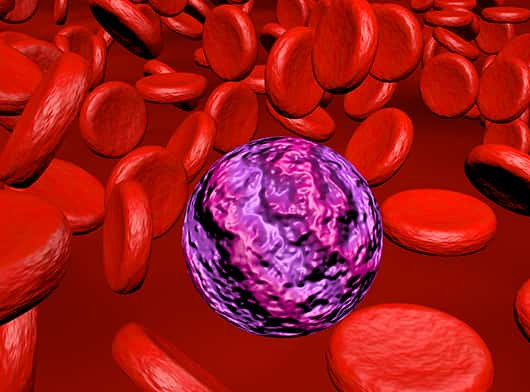The diagnosis results are to help on determining the AML subtypes, and on determining tumour prognosis status.
- Medical history and Physical Examination : To look for signs of bleeding, bruising, or infection.
- Blood tests : Complete blood count (CBC), a peripheral blood smear checks for blast cells.
- Imaging tests : X-rays, CT scans, MRIs, PET CT (need based) and ultrasounds give a clearer picture of what’s going on inside you. They can help find infections or show when cancer has spread to other parts of the body.
- Bone marrow tests : Your doctor will put a needle into a bone in your chest or hip and take out a sample of bone marrow. A specialist will look at it under a microscope for features of leukemia.
- Flow cytometry : This test is important in diagnosing AML. It uses a machine that looks for certain substances (markers) on or in cells that help identify what types of cells they are. This test can be used to see if the lymphocytes in a sample of blood contain AML cells. Flow cytometry can also be used to look for AML cells in bone marrow or other fluids.
- Genetic Test : Some sort of genetic testing will be done to look for any chromosome abnormalities or any known gene mutations. It includes conventional cytogenetics, Fluorescent in situ Hybridization (FISH), Polymerase Chain Reaction (PCR).
- Conventional Cytogenetics : This test looks at chromosomes (pieces of DNA) under a microscope to find any changes. It's also called a karyotype.
- Fluorescent in situ Hybridization (FISH) : FISH is another way to look at chromosomes. This test uses special fluorescent dyes that only attach to specific genes or parts of chromosomes. In AML, FISH can be used to look for specific translocations or changes in chromosomes. It can be used on regular blood or bone marrow samples without growing the cells first, so you get the results more quickly than with conventional cytogenetics.
- Polymerase Chain Reaction (PCR): This is a super-sensitive test that can be used to look for the specific gene mutations in leukemia cells and measure how much is there. It can be done on blood or bone marrow samples and can detect very small amounts of gene mutations.
- Spinal tap (Called a lumbar puncture): Uses a needle to take some cerebrospinal fluid from around spinal cord. A specialist checks it for leukemia cells.
- Other tests are immunochemistry test, and tumour marker related test



.png)
